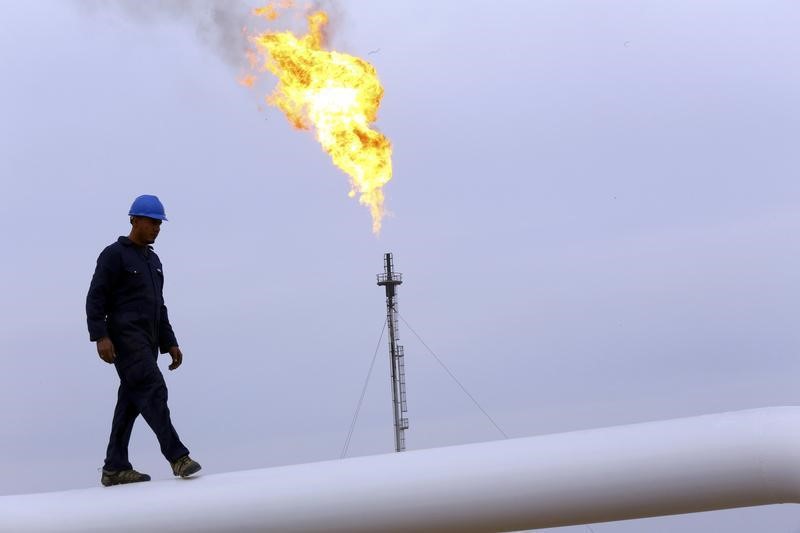Investing.com – The much anticipated technical rebound in oil emerged on Friday after four days of losses in a row for U.S. crude and three for global benchmark Brent.
The gains weren’t enough though to erase the ferocity of the selloff sparked by the U.S. banking contagion and economic concerns, putting oil on the path to a third straight week in the red.
New York-traded West Texas Intermediate, or , settled up $2.78, or 4.1%, at $71.34 a barrel. For the week, the U.S. crude benchmark was down around 7%, adding to two prior losses of 1.2% and 5.8%, respectively, for the weeks ended April 28 and April 21.
“WTI crude seems like it is ready to find a home comfortably above the $70 level, but oversupply fears for now should cap any rallies that get close to the $75 region,” said Ed Moya, analyst at online trading platform OANDA.
London-traded for July delivery rose for a second day in a row, gaining $2.69, or 3.9%, at $75.30. For the week, the global crude benchmark was down 5.3%, adding to prior weekly losses of 2.6% and 4.9%.
Friday’s rebound in oil came as data showed U.S. employers 253,000 jobs in April, way above economists’ expectations. Strong jobs growth is always a plus for oil, whose consumption depends on peoples’ mobility and economic vibrancy. In the case of the U.S. economy, however, strong jobs numbers have been a problem as they’ve been adding to inflation since the end of the coronavirus pandemic.
The employment expansion in April was some 40% above the forecast growth of 180,000 and moved the a notch lower to 3.4% from a previous 3.5%, making it harder — at least in theory — for the Federal Reserve to stop raising .
It has been a dramatic fall from grace for oil in just a month after the much glorified OPEC+ production maneuver that added almost $15 to a barrel in early April, after another round of selloffs then sent crude prices to 15-month lows.
OPEC+, which groups the 13-member Saudi-led Organization of the Petroleum Exporting Countries with 10 independent oil producers, including Russia, announced in early April that it will cut a further 1.7 million barrels from its daily output, adding to an earlier pledge from November to take off 2.0 million barrels per day.
OPEC+, however, has a history of over-promising and under-delivering on production cuts. While the group achieved over-compliance on promised cuts in the aftermath of the 2020 coronavirus breakout, experts say that was more a result of battered demand that led to minimal production, rather than a will to cut barrels as pledged.
Probably sensing that the oil trade may not be as responsive to another production maneuver right away — OPEC+’s next meeting is only in June, anyway — the cartel’s chief Saudi Arabia announced on Thursday a unilateral price drop of 25 cents a barrel for Asian buyers of its oil.
Moya said the Saudi price reduction to Asia, as modest as it was, “confirms slowdown fears.”
But the Saudis also raised the selling price of Arab light crude to North West Europe by $2.10 above the settlement of Brent to leverage on any lost income from the price drop of the past month. That showed the Saudis to be price-focused more than anything else, despite OPEC+’s public protestations that its production cuts were about “balancing” the market.
Read the full article here












